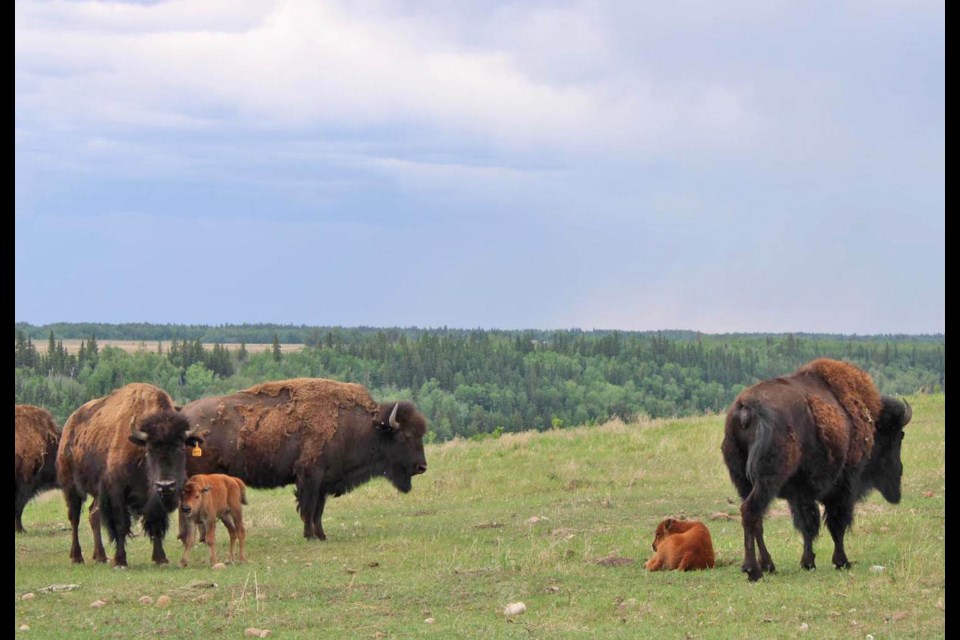LAKELAND - The recent births of two wood bison calves are an historic event for the Métis people of Alberta and mark an important milestone for Reconciliation, says Métis Crossing CEO Juanita Marois.
The calves are the first to be born into the herd of 15 cows and five young bulls at the 320-acre Visions, Hopes and Dreams Wildlife Park, which is part of Métis Crossing, south of Smoky Lake.
Prior to the reintegration of 20 wood bison to the Métis Crossing lands in 2021 from Elk Island National Park, the last time this specific bison breed - known in the traditional Michif Métis language as 'lii buffloo – inhabited the area was in the late 19th Century.
The transfer of the bison from Elk Island to Métis Crossing was coordinated by the Métis Nation of Alberta to help conservation efforts and cultural revitalization. After familiarizing at a Métis Crossing partner facility for 14 months, 20 wood bison were released into the paddocks at the Visions, Hopes and Dreams land at Métis Crossing in November 2022. The Visions, Hopes and Dreams land is an area where a range of animals are free to roam.
The newborn calves live among a herd of 20 wood bison, 17 plains bison, 17 white bison, 25 elk and 20 Percheron horses in the park. The future of the animals is tied closely to the past history of the Métis people, explains Marois.
“Bison were once a vital food source for Métis peoples. Communal hunts were a major component of life and formed the bedrock of traditional Métis society,” she explained. “It was at these gatherings that our ancestors developed democratic and judicial systems through what was known as ‘Laws of the Buffalo Hunt.’”
Marois says the first wood bison calves to be born in the area in 160 years have already brought attention to the Métis Crossing more visitors to Métis Crossing. The site is in the early stages of a planned expansion that is designed to transform the historical settlement into a year-round cultural destination.
“The return of the bison to these lands has provided us with an excellent opportunity to share important stories of Indigenous history,” she said. “The loss of the bison was felt deeply by Métis peoples, so to play a role in their reintroduction to these traditional lands is significant.”
Audrey Poitras, the president of the Métis Nation of Alberta, said although they are native to the Smoky Lake region, wild bison were nearly driven to extinction by settlers in the 19th Century, who didn't hold the same conservation and sustainability beliefs as the Indigenous people. She said those reduced herds brought an end to traditional bison hunts.
“Since the early 1800s, Métis have fought to exercise their inherent rights to self-determination and self-government,” Poitras said. “Bison hunting has always played a significant role in our long history, one that extends back to when we organized ourselves to govern our bison hunting expeditions with sustainability and preservation in mind.”
The Métis Crossing cultural site is located 15 kilometres south of Smoky Lake on Highway 855. It is situated on Victoria Trail alongside the North Saskatchewan River.





